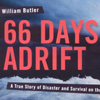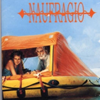HOW TO DISMAST YOUR BOAT
Talk to the expert. So far I have successfully destroyed three sticks. I hope that facet of my life is over, but I’d be surprised. I’ve been developing that talent for sixty years.
T’was the winter of 1944. The northers swept down from Canada, showering snow, sleet and rain from the great plains to the East coast, then crossed the Gulf Stream to pelter Havana with high winds and humongous waves. Thirty-foot masses of water built up momentum as 25 knot winds propelled it across the ninety mile stretch of water that separates Key West from Cuba to break against Punta Brava, a slight outcropping one block from my high school. On lunch break, the macho high was to touch the breakwater without getting soaked by waves that more often than not spread spray 199 feet in the air.
It was during the tail end of one of these northers that three of us sailed our Snorky’s out of our reef protected anchorage and into the ocean. Ocean waves form a pattern.
After 4 or 5 extra large waves, about two minutes pass when the waves are relatively small. It was during this period that we would use to escape into the ocean. Outside, the sailing was great, the water deep blue, the breeze perfect at 15 knots.
We chased each other with a bucket in hand intent in soaking the next boat. A great time. The other two boats beat me across the reef. I sailed back and forth just outside of the shallow water, waited for those 4 to 5 large waves to pass, then shot in. Problem was that the wind had died and I was about half way across the reef when I look out to see a series of huge waves beginning to curl.
The first broke early and pushed us broadside towards shore. The second broke on us. The boat somersaulted. We body surfed twenty feet, then got hit twice more. Our buddies in the other two boats came to the rescue. Our Snorky floated right side up, submerged, the mast in about 6 pieces. With the two buckets we re-floated Pallas and got towed into the dock.
My dad was not a happy person, but did get me a new mast. Then in 1964 in Manila I owned Monsoon, 26’ on deck but 35 overall what with a 5-foot bowsprit and a 4 foot bumpkin. It had been built in Hong Kong before WW II, spent the war years sunk up the Pearl River towards Canton to keep it away from the Japanese, then re-floated after the war, and ultimately sailed to Manila. With its 35’ OA rig, she was fast, and being a racer at heart, I always pushed the canvas. She was ready to go for an around the buoys race in October, 1964.
My eager #1 crew were juiced up for a win, more so when we stole the start in a light northeast wind. 16 boats trailed us as we rounded the sea buoy off Sangley Pont Naval Air Station. Trident, a 45 foot steel ketch, was hard on our wake as the customary noon wind change to the southeast hit. I looked back at this behemoth gaining on us, then up at the large genoa that should not be flying in 20 knots. Minutes passed. We held out own. I headed to windward to keep Trident in my lee. The wind increased to 25 knots. Trident was loving it. Heavy, it was beginning to move at hull speed. I needed to reduce sail, but to do so would take minutes. What to do was suddenly resolved for me. With a spectacular crash the mast, sails and rigging went over the side. Monsoon came to a grinding stop.
Nothing left to do but have a cold beer. Siboney loved a good breeze. With its cutter rig, there was a sail combination for all wind conditions up to 40 knots. My family enjoyed Sunday sails and on Sunday, date???XX, the wind and waves were perfect for a leisurely day sail. On the North coast of Venezuela the traditional trade wind begins to blow out of the northeast in the late morning, peak at about a twenty knot maximum about 3 p.m., then begin to ebb until it drops completely in the evening, to be replaced by a land breeze.
With snacks packed, my wife and children aboard, the boys cast off , then raised the main and yankee as I drove her out the harbor breakwater. Waves were about 3 feet, the wind at 15. To make life easy I always headed northwest on a reach, then reached back in. No stress, no strain. By 4 p.m we had enough and headed back in. The club dining area at one end of the breakwater was jammed.
A showman at heart, I brought Siboney in with all sails full and cranked in tight. From shore, all eyes were on Siboney. I held it tight as we neared the outer breakwater, a mere 150 feet from the dining area, when a stay popped, the mast broke in two and all went over the side. I doubt those people will ever witness a more spectacular show.


